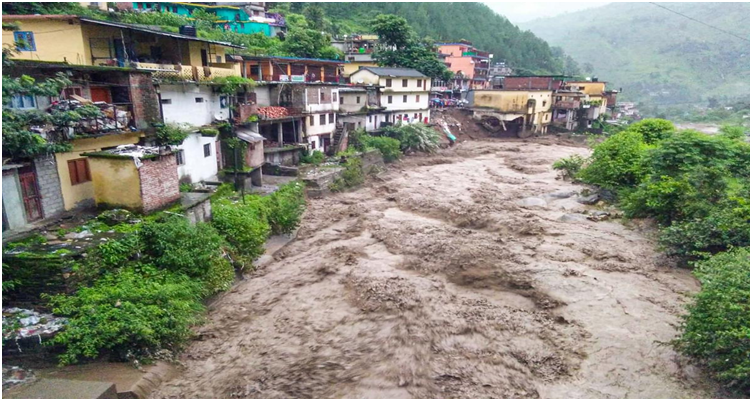Nicobar project gets assent for diversion of 130 sq km of forest (GS Paper 3, Infrastructure)

Why in news?
- The Union Ministry of Environment, Forest and Climate Change (MoEFCC) has granted an in-principle (Stage 1) clearance for the diversion of 130.75 sq km of forest in Great Nicobar Island for the mega ₹72,000-crore project.
Details:
- It includes a transshipment port, an airport, a power plant and a greenfield township.
- The project implementation agency is the Andaman and Nicobar Islands Integrated Development Corporation (ANIIDCO).
Impact on biodiversity:
- The area is nearly 15% of the thickly forested Great Nicobar Island that is spread over 900 sq km.
- This is one of the largest single such forest diversions in recent times: it is nearly a quarter of all the forest land diverted in the past three years across the country (554 sq km as per information provided in the Lok Sabha in July) and 65% of the 203 sq km of forest land diverted in the three year period 2015-18.
- The Ministry’s own estimates suggest that 8.5 lakh trees will have to be cut in Great Nicobar for this project.
- This is doubly significant because these are
- primary evergreen tropical forests with high biological diversity and also high endemism;
- the island has among the best preserved tropical forests in the world,
- is home to nearly 650 species of flora and 330 species of fauna, including endemic species such as the Nicobar shrew, the Nicobar long-tailed macaque, the Great Nicobar crested serpent eagle, the Nicobar paradise flycatcher and the Nicobar megapode, among many others.
- Compensatory afforestation
Compensatory afforestation:
- A key condition for the clearance is the submission of a detailed scheme for compensatory afforestation, which is to be done on “non-notified forest land” in Haryana.
- It also states that an amount of ₹3,672 crore needs to be earmarked for the environment management plan (EMP) for the construction and operation phase of the project.
- The final environment impact assessment (EIA) report of the project that was prepared in March 2022 and accepted by the Ministry’s Expert Appraisal Committee (EAC) had calculated the cost of this compensatory afforestation to be ₹970 crores.
- Interestingly, the final EIA report mentioned that the compensatory afforestation over 260 sq km (twice the diversion area) will be carried out in Madhya Pradesh and even carries a letter of the Andaman and Nicobar Forest Department certifying that the Government of Madhya Pradesh has submitted the details for the same.
- There is no clarity on how the switch was made to Haryana and what process, if any, was followed for the same.
Forest land in Haryana:
- Haryana stands out for having one of the highest rates of diversion of its own forest land even though the forest cover in the State is minimal.
- The State diverted nearly 80 sq km of its forest between 2014-15 and 2016-17, the highest for any State in the country for that period.
- The State was also chastised in May for unwise use of compensatory afforestation funds, too much focus on plantations and failure to raise the forest area, by Haryana’s Compensatory Afforestation Fund Management and Planning Authority (CAMPA).
Conclusion:
- There is neglect of multiple clauses of the Forest Conservation Rules and Guidelines in the de-reservation process and also the violation of a Supreme Court order of November 13, 2000 (reiterated on February 9, 2004) which ordered no further “de-reservation of forests/sanctuaries/national parks”.
- It is unclear how ANIIDCO, the project proponent, will compensate for the loss of these virgin tropical forests teeming with endemic and endangered species with artificial tree plantations in the faraway State of Haryana.
CSIR-NGRI to install early warning systems in Himalayan States
(GS Paper 3, Environment)
Why in news?
- The National Geophysical Research Institute (NGRI) of the Council of Scientific and Industrial Research has begun field studies to put in place an early-warning system in the Himalayan States against major and sudden floods, rockslides, landslips, glacier lake bursts and avalanches and to prevent Chamoli kind of disasters in future.

Details:
- The scientists in the institute have identified a few locations in the higher reaches of Uttarakhand for “densification” of seismometers and river gauges to take the total number to 100 from 60.
- The objective is to closely monitor the river flows in specific areas along the catchment to detect any sudden rise in water levels or flooding threshold that can lead to a hazard.
Focus on seismic waves:
- Scientists have decided to take cognisance of the vibrations or “noise” recorded by the seismometers, which need not be due to earthquakes but can also be because of vehicular traffic, animal movement, rain, river flows and so on.
- These instruments are crucial for the safety of large infrastructure projects and hydroelectric power plants in this region.
- Currently, scientists are able to detect and assess a sudden flow 30-40 km away since the seismic wave is faster than the flow, and hence, the advance warning comes at least half an hour before.
Way Forward:
- The NGRI has started utilising Machine Learning to detect these observations faster than the normal approach because time becomes crucial during a warning.
Researchers discover new crab species in Vellar estuary
(GS Paper 3, Science and Tech)
Why in news?
- Recently, researchers have discovered a new species of estuarine crab at the mangroves of Parangipettainear the Vellar River in Cuddalore district,Tamil Nadu.

Pseudoheliceannamalai:
- The species has been named Pseudoheliceannamalai in recognition of Annamalai University’s 100 years of service in education and research.
- This is the first ever record of this genus, Pseudohelice , collected from high intertidal areas.
- So far, only two species; Pseudohelicesubquadrata and Pseudohelicelatreillii have been confirmed within this genus.
- The species discovered is distributed around the Indian subcontinent and the eastern Indian Ocean.
Distinguishing features:
- Pseudoheliceannamalai is distinguished by dark purple to dark grey, with irregular light brown, yellowish brown, or white patches on the posterior carapace with light brown chelipeds.
- The new species is small and has a maximum width of up to 20 mm.
- The species inhabits muddy banks of mangroves, and the burrows were located near the pneumatophores of Avicennia mangroves.
- Burrows have a depth of 25-30 cm and are branched, with larger pellets around the entrance.
- This species is not aggressive and can move fast like other intertidal crabs. As many as 17 species of intertidal crabs have been recorded in the same region.
Parangipettai mangroves:
- Specimens of Pseudoheliceannamalai were collected from the high intertidal areas of the Vellar River estuary, Parangipettai, with sediments composed of mud and sand.
- The mangroves in the habitats were artificially planted on 5 hectares along the northern bank of the river, with two distinct zones — Rhizophora spp. towards the estuary and Avicennia spp. towards the land in the intertidal area.
Significance:
- The occurrence of Pseudohelice in India links the distribution gap between the western Indian Ocean and the western Pacific Ocean.
- The new species provides additional evidence of the geographic isolation of the eastern Indian Ocean for some marine organisms.
Indias first private sector rocket Vikram-S to be launched in November
(GS Paper 3, Science and Tech)
Why in news?
- India's first privately developed rocket Vikram-Sis set for a launch in a sub-orbital mission with three payloads, Hyderabad-based space startup Skyroot Aerospace announced recently.

Key Highlights:
- The maiden mission of Skyroot Aerospace, named 'Prarambh' (the beginning), will carry two Indian and one foreign customer payloads.
- Itis set for launch from Indian Space Research Organisation's launchpad at Sriharikota.
- Spacekidz, a Chennai-based aerospace startup, will fly 'Fun-Sat', a 2.5 kg payload developed by students from India, the US, Singapore and Indonesia on the sub-orbital flight on board Vikram-S.
Three Variants:
- Skyroot has been developing three variants of the Vikram rocket.
- While the Vikram-I can carry 480 kilograms of payload to Low Earth Orbit, the Vikram-II is equipped to lift off with 595 kilograms of cargo. Meanwhile, Vikram-III can launch with 815 kg to 500 km Low Inclination Orbit.
- The Vikram-I launch vehicle will be powered by Kalam-100 rocket, which successfully went through a static fire test earlier in 2022.
- The test was conducted at a facility of one of the company's investors, Solar Industries India.
Facts about Skyroot:
Way Forward:
The Prarambh mission is expected to launch in the second week of November on a demonstration flight with the Vikram-S launch vehicle.





